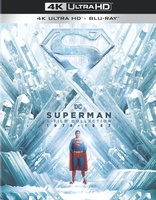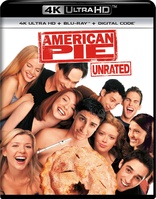
First grain is not more prevalent on smaller screen sizes than larger ones. That assumption couldn't be further from the truth. Nor should 1080i vs 1080p impact the appearance of grain. The removal of grain is never a good thing. If you personally don't want film to look like it's supposed to and are using a small enough display that the loss of detail associated with grain reduction isn't perceptible then DVD is for you or you should try lowering sharpness, adding noise reduction (available in many players), defocusing the lens, or other techniques that have the same affect of filtering. Odds are if your sharpness setting is higher than 0, you're aggravating grain on your own. But, any grain reduction is perceptible at larger screen sizes in a loss of detail and sometimes other side-effects of the filtering itself. If you think you might ever have a desire to upgrade to a larger display, you may find yourself seeing things in a much clearer light. That said, if you think a title is excessively grainy at 50". Any title. Odds are there is something in the chain that is aggravating it. Many display manufacturers over-enhance edge contrast to a degree that can't be alleviated by the user sharpness control. You have to go into the service menus to effectively turn it off. Analog conversion will compound video based artifacts. Lower bit video processing, like 8 bit video processing will also add to what is in the source. Any display more than a year old most likely falls back to 8 bit video processing and many newer ones probably still do. Inefficient deinterlacing, compounded by scaling to lower resolutions like 720p can aggravate source born artifacts as well. Of course player design and how they are setup can have as much of an impact as the displays.
Grain isn't "cleaned up" on DVD out of some preference. High definition offers, for the first time, a more complete appreciation of the look of film. DVD is just such a lossy technology that grain, like detail, is lost in the necessary filtering processes. With BD studios are opting to "show what was originally intended" because that's the whole point of higher fidelity. If you don't like something you see, a better understanding of film is in order or tweaking the video until it suits your personal taste. Unlike DVD, in many cases you're not criticizing disc authoring, you're criticizing the film itself. So if you don't like something, it's the film you don't like, not the technology.
It's not lazy of a studio not to filter grain, it's commendable. The only reason to use filters for high definition is in the case of older films where the source print has degraded over years in storage or during the films run. It could be said that it's lazy of consumers who expect everything to be plug and play. None of us have perfect display devices, whether it cost 1k or 20k. Most probably have done little, if anything to properly calibrate their displays, which even if they did, isn't a guarantee of anything. If you want to get the most out of your components you have to understand them better. To the same extent, better education of the consumer may be in order, not compromising the video to compensate for ignorance or a lack of appreciation for the dynamics of film.
I understand that some prefer the look of HD video to film. But grain is to film like brush strokes are to a painting. Naturally preserved grain shouldn't be associated with the likes of compression. If you don't understand it well enough to develop some level of appreciation, you're not going to like a lot of movies in high def, unless you learn how to remove it yourself, via better setup or the compromising methods described above. Speilberg is a huge proponent of film grain. You can expect SPR, JP, Minority Report, and many other films of his to look grainy if preserved to his satisfaction.
You can't judge a film by its trailer either. Trailers are often created aside from any tweaking done during post. And as they're less important than the film itself, they are more likely to be compromised on the discs (ie filtered or overly compressed). Trailers for Click may look less grainy. But you can be assured that the film recieved better care than the trailers. So, odds are in favor of the film being truer to what the director and DP intented.
|





















 Threaded Mode
Threaded Mode